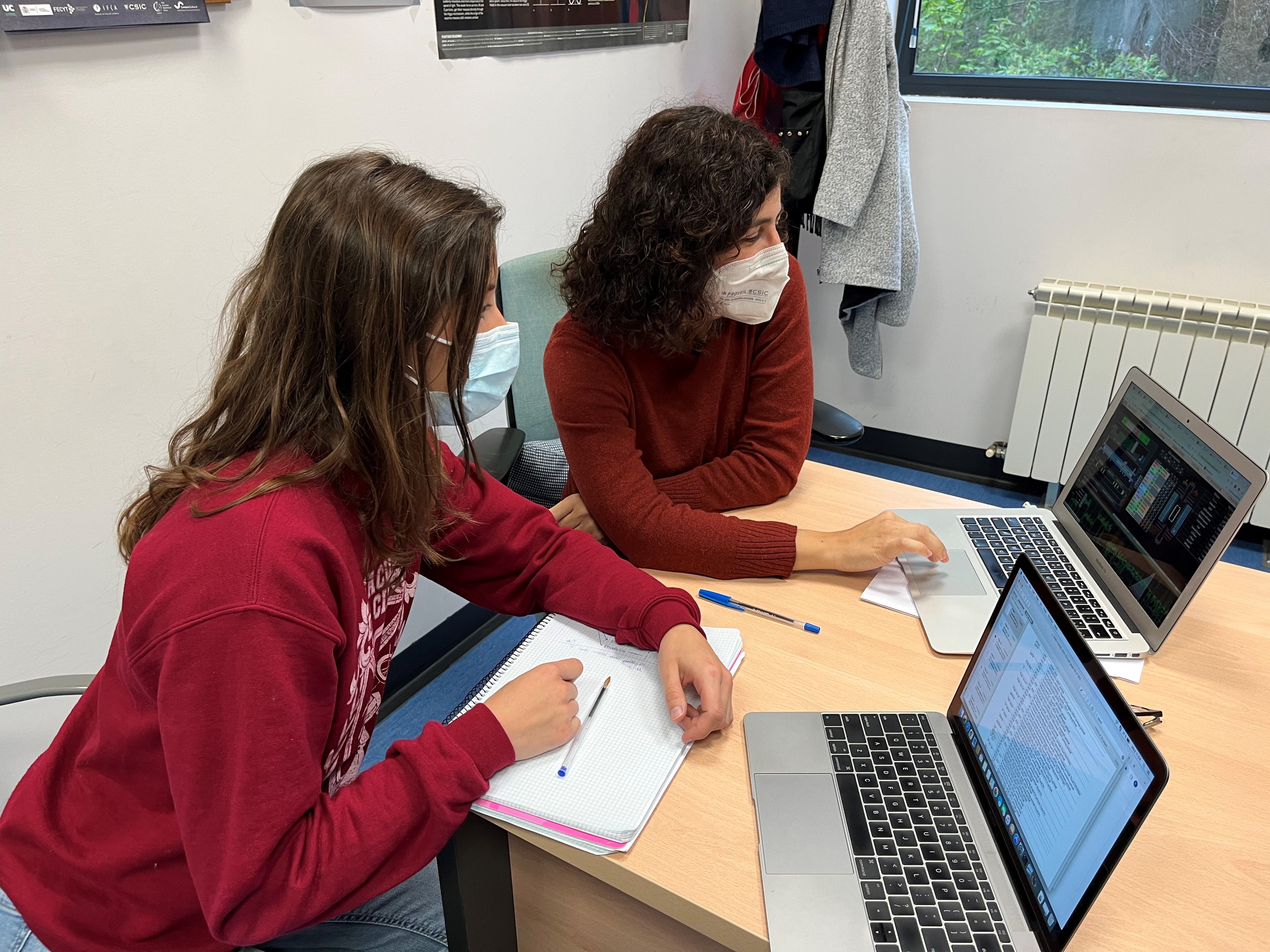IFCA's Particle Physics and Instrumentation Group will participate in this new project by analysing the data received from the Large Hadron Collider (LHC)
29 April 2022
The world's largest and most powerful particle accelerator has started up again after a break of more than three years for maintenance, consolidation and upgrades.
On Friday 22 April at 12:16 pm, two protons began to circulate in opposite directions through the 27-kilometre ring of CERN's Large Hadron Collider (LHC) with an injection energy of 450 billion electron volts (450 GeV). This marked the start of the LHC's third operating period, hence the name Run 3.
"From 2009 to 2012 is what we call Run 1, when the Higgs boson was discovered, running with a collision at that time of 7 and 8 TeV. Then it stopped for two years until 2015, where it started running with a 13 TeV collision Run 2, from 2016 to 2018. At the end of 2018 it stopped again for four years and is now going to start operating with an energy of 13.6 TeV (Run 3) in the summer," explains Celso Martínez, a researcher in the Particle Physics and Instrumentation Group at IFCA (CSIC-UC) and representative of the CMS detector in Spain, "there is no accelerator on Earth that reaches that controlled energy," he says.
This marks the end of the LHC's second long stop and the start of a new cycle of physics data collection, which will extend over the next four years and is scheduled to begin this July. "They have been circulating particles inside the accelerator for a few weeks now to check that everything is OK," explains the researcher.
"You have to bear in mind that this accelerator, which is 27 kilometres long, is very difficult to start working from one day to the next. It has to be cooled down because it is at 269º below zero, it is the coldest place in the universe," Rivero explains. Until then, the scientific community at the LHC will work to gradually restart the machinery and safely increase the energy and intensity of the particles, with the aim of producing collisions at a record energy of 13.6 trillion electron volts.
The LHC during preparatory work after three years of stoppage. / CERN
4 August 2022
However, it will not be until this summer that the accelerator's detectors will begin to collect data from collisions between particles not only at record energy but also in quantities never before achieved, and to offer data to the research team, as Martínez explains. "In principle, on 4 August 2022, it will start colliding by giving physics, i.e. colliding and producing data that we will collect in the CMS detector.
And this data will in turn feed several of the projects in which the IFCA is involved: "One for computation, by Francisco Matorras, another for upgrade, led by Gervasio Gómez and Iván Vila, and another for analysis in Run 3, mine together with Alicia Calderón, which will analyse all the data we receive in Higgs, in top quark, in SUSY (Supersymmetry) and in dark matter", says the CMS representative in Spain.
"Our goal is to analyse the data, to see new physics, if possible, and this will take us several years from now. In addition, we will now have to go to CMS to analyse the data," says Alicia Calderón, a researcher in IFCA's Particle Physics Group.

Alicia Calderón and double degree student, Paula Desiré, reviewing Run 2 data. / IFCA
In the case of the ATLAS and CMS experiments, the research community expects to record more collisions during this new Run 3 than in the previous two periods of operation combined, while LHCb, which has been completely refurbished during the shutdown, expects its number of detected collisions to increase by a factor of three. ALICE, a detector specialised in the study of heavy ion collisions, expects a four- to five-fold increase in the total number of ion collisions detected thanks to the improvements implemented.
A closer look at recent research
The large number of collisions expected to be recorded will allow the international research community to study the Higgs boson as precisely as possible and to subject the Standard Model of particle physics to its most stringent tests to date.
Two new experiments, FASER and SND@LHC, designed to search for physics beyond the Standard Model, are also planned to start. In addition, the research team has many other goals for this new Run 3, such as the study of proton-helium collisions to measure the frequency with which proton antimatter is produced in these interactions, or the analysis of collisions with oxygen ions, and to extend the knowledge about the physics of cosmic rays and of quark-gluon plasma, a state of matter that existed shortly after the Big Bang. 